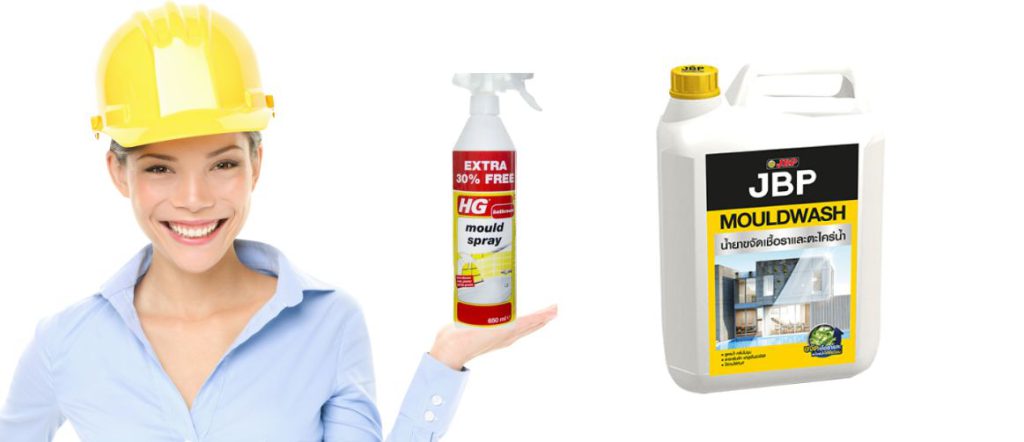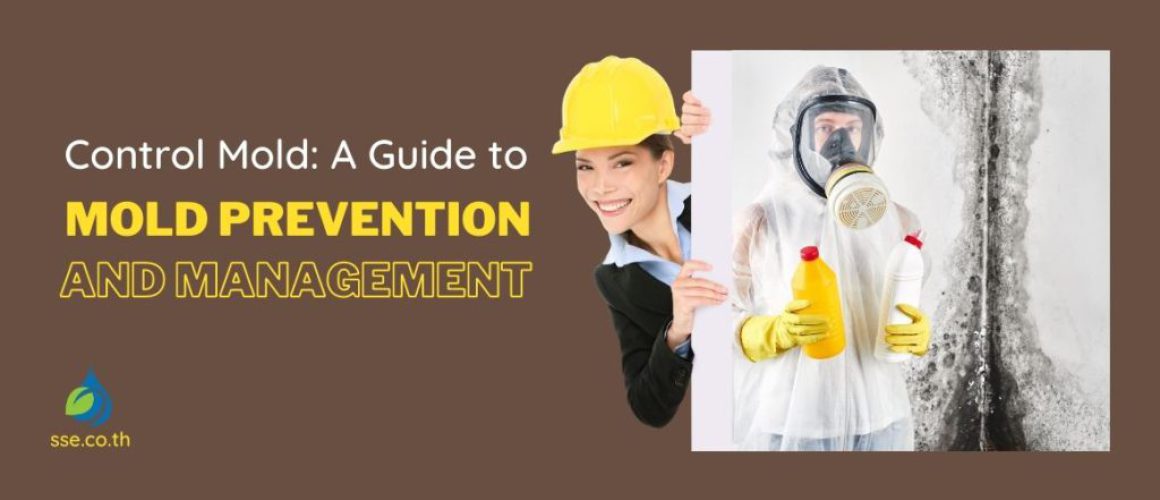Control Mold: A Guide to Mold Prevention and Management
Table of Contents
Struggling with mold in your home? Our guide on Mold Prevention and Management is here to help! We’ll walk you through practical steps to control mold, keeping your home healthy and comfortable. Stay tuned for tips, tricks, and expert advice!
Introduction
Understanding the nature of mold is the first step in managing it. Mold is a type of fungus that thrives in damp environments. It can appear in various forms, from fuzzy patches on your bread to black spots on your shower tiles. However, it’s not just an unsightly nuisance. Mold can cause a host of health issues, including allergies, asthma attacks, and other respiratory problems.
Taking a proactive approach to mold prevention can save you a lot of trouble down the line. By controlling the moisture in your home, cleaning regularly, and using mold-resistant products, you can create an environment where mold struggles to take hold. This guide will walk you through the steps of mold prevention and management, helping you maintain a healthier, happier home.
Mold prevention and management is a proactive process that requires awareness, action, and sometimes, professional help.
Understanding Mold and Its Impact on Health
Mold is more than just an unsightly nuisance. It’s a silent invader, creeping into your home and causing havoc on your health. The tiny spores it releases into the air can trigger a host of health issues. You might find yourself sneezing more often, your eyes may become itchy and red, or you might develop a persistent cough. For those with existing respiratory conditions, the effects can be even more severe.
But it’s not all doom and gloom. By understanding the health risks associated with mold, you’re already on the path to better mold management. Knowledge is power, and in this case, it’s the power to protect your home and health from the damaging effects of mold. With the right strategies and tools, you can keep your home mold-free and breathe easier.

Common Types of Indoor Mold
| Mold Type | Common Locations | Potential Health Effects |
|---|---|---|
| Black Mold (Stachybotrys chartarum) | Damp, water-damaged areas | Allergic reactions, respiratory issues |
| Penicillium | Wallpaper, decaying fabrics, fiberglass duct insulation | Allergic reactions, asthma |
| Aspergillus | High-humidity environments, often found in air conditioning systems | Allergic reactions, lung infections |
Common Signs of Mold Infestation
When mold decides to make an unwelcome appearance in your home, it doesn’t exactly ring the doorbell. Instead, it sends subtle signals that you need to be on the lookout for. One of the first signs is often a persistent musty smell. This is the scent of mold at work, breaking down organic materials in your home. If you catch a whiff of something musty, it’s time to start investigating.
Visible mold growth is another telltale sign. It might start as small, speckled patches but can quickly grow into large colonies. It’s important to note that mold comes in a variety of colors, including black, white, green, or even pink. And let’s not forget water damage. If you see water stains or discoloration on walls, ceilings, or floors, it’s a pretty good sign that mold could be lurking. Water damage can also cause materials to warp or peel. So, if you see any of these signs, it’s time to roll up your sleeves and get to work on mold prevention and management.
The Role of Moisture in Mold Growth
Moisture is the lifeblood of mold. It’s the catalyst that transforms dormant mold spores into thriving colonies. When you see mold in your home, it’s a clear sign that somewhere, water or humidity levels are higher than they should be.
To effectively manage and prevent mold, it’s crucial to keep your home as dry as possible. This might mean using dehumidifiers in damp areas, ensuring your home is well-ventilated, or promptly fixing any leaks. By controlling the moisture, you control the mold.
Practical Steps for Mold Prevention
Taking practical steps towards mold prevention can save you a lot of hassle in the long run. Simple actions like fixing leaks promptly, using a dehumidifier in damp areas of your home, and ensuring good ventilation can make a big difference. It’s also important to keep your home clean, as dust and dirt can provide food for mold, encouraging its growth.
Another effective strategy is to use mold-resistant products in your home. For instance, mold-resistant paint can be used in areas prone to dampness such as the bathroom or basement. These products contain additives that prevent the growth of mold, providing an extra layer of protection for your home.
Symptoms of Mold Exposure
| Symptoms | Description |
|---|---|
| Stuffy Nose | Nasal congestion or blockage |
| Wheezing | Difficulty breathing, often accompanied by a whistling sound |
| Skin Irritation | Redness, itching, or rash on the skin |
| Eye Irritation | Redness, itching, or watering of the eyes |
Dealing with Mold: Remediation and Removal
If you’ve discovered mold in your home, it’s important to deal with it promptly. Small areas of mold can often be cleaned with household products like vinegar or baking soda. However, for larger infestations, it’s advisable to call in professionals. They have the necessary equipment and expertise to safely remove the mold and prevent it from returning.
Remember, mold removal is not just about getting rid of the visible mold. It’s also about addressing the underlying moisture problem that caused the mold to grow in the first place. This might involve fixing leaks, improving ventilation, or using a dehumidifier to reduce humidity levels.
Steps for Mold Prevention
- Control humidity levels in your home
- Fix leaky roofs, windows, and pipes promptly
- Clean and dry areas thoroughly after flooding
- Ventilate shower, laundry, and cooking areas
Steps for Mold Remediation
- Identify and address the source of moisture
- Remove moldy materials and replace them
- Clean and dry the affected area thoroughly
- Consider professional mold remediation services for extensive infestations
Professional Mold Removal Services
When mold takes hold, it can feel like an uphill battle to reclaim your home. Professional mold removal services are equipped with the necessary tools and knowledge to tackle even the most stubborn infestations. They can thoroughly clean the affected areas, ensuring that every last spore is eradicated.
Moreover, these experts can provide invaluable advice on preventing future mold growth. They can identify potential problem areas in your home and suggest practical solutions. So, if you’re facing a daunting mold issue, consider reaching out to the professionals. It’s not just about cleaning up; it’s about safeguarding your home and health for the long term.
Home Safety Products for Mold Prevention
In the battle against mold, there are several tools at your disposal. Dehumidifiers, for instance, are excellent for maintaining a dry environment in your home. They work by reducing the level of humidity in the air, making it less conducive for mold growth.
Air purifiers, on the other hand, help to clean the air by trapping airborne mold spores, thus preventing them from settling on surfaces and multiplying. Mold-killing cleaning products are also essential for treating areas where mold has already begun to grow.
Another effective product to consider is a desiccant. Desiccants, like silica gel, are substances that absorb moisture from the air. By placing desiccants in areas prone to dampness, you can help to keep the environment dry and less hospitable to mold.
These products, when used in conjunction with the mold prevention strategies we’ve discussed, can significantly reduce the risk of mold infestation in your home. It’s all about creating an environment where mold simply can’t thrive.
Home Safety Products for Mold Prevention
| Product | Use |
|---|---|
| Dehumidifier | Reduces humidity levels, making the environment less hospitable to mold |
| Air Purifier | Helps to remove mold spores from the air |
| Desiccant | Controls Humidity |
| Moisture Meter | Measures the moisture levels in various materials to detect potential mold growth |

Conclusion
Mold prevention and management is a proactive process that requires awareness, action, and sometimes, professional help. By understanding the risks associated with mold and taking the necessary steps to prevent it, you can maintain a healthy and comfortable home environment.
Identifying a mold problem early is key to effective management and prevention. Don’t wait until it’s too late!
Call to Action
Ready to take control of your home’s health and prevent mold? Start implementing these strategies today. Don’t forget to explore our Moisture Protection category for a range of products designed to help you combat mold and moisture in your home.
For more specific solutions, consider our HG mold spray 650 ml and Mold and algae remover JBP MOLDWASH size 1 liter. These products are specifically designed to tackle mold problems effectively.
For more in-depth information on mold and how to combat it, you can also refer to our previous post on The Dangers of Black Mold. Take action today and reclaim your home from mold!
Sources
Mold and Health | US EPA: This page from the United States Environmental Protection Agency provides comprehensive information on how molds affect people, the role of moisture in mold growth, and practical steps for mold prevention and remediation.
Frequently Asked Questions
What is mold and why is it a problem?
Mold is a type of fungus that grows in damp environments. It can cause structural damage to your home and health issues like allergies and respiratory problems.
How can I prevent mold growth in my home?
Mold prevention involves controlling moisture in your home. This can be achieved by proper ventilation, using dehumidifiers, fixing leaks promptly, and keeping surfaces clean and dry.
What are the signs of a mold infestation?
Signs of mold include a musty smell, visible mold growth which can be in various colors, and health symptoms like allergies, wheezing, or skin irritation.
Can I remove mold myself?
Small mold infestations can often be handled with household cleaning products. However, for larger infestations or if you’re dealing with black mold, it’s recommended to seek professional help.
What is black mold and is it dangerous?
Black mold, or Stachybotrys chartarum, is a type of mold that produces toxins called mycotoxins. Prolonged exposure can lead to serious health issues like respiratory problems and immune suppression.
What are some home safety products that can help with mold prevention?
Products like dehumidifiers, air purifiers, moisture absorbers, and mold-resistant paints can help in mold prevention.
What should I do if I have a severe mold infestation?
If you have a severe mold infestation, it’s best to call in professionals who have the right equipment and expertise to safely remove the mold and prevent future growth.
How does moisture contribute to mold growth?
Mold spores need moisture to grow and reproduce. High humidity, condensation, and water leaks are all sources of moisture that can lead to mold growth.
